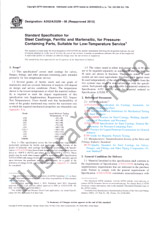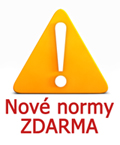Potřebujeme váš souhlas k využití jednotlivých dat, aby se vám mimo jiné mohly ukazovat informace týkající se vašich zájmů. Souhlas udělíte kliknutím na tlačítko „OK“.
ASTM/ISO 51900-09(2017)
Standard Guide for Dosimetry in Radiation Research on Food and Agricultural Products
Přeložit název
NORMA vydána dne 1.12.2016
Informace o normě:
Označení normy: ASTM/ISO 51900-09(2017)
Poznámka: NEPLATNÁ
Datum vydání normy: 1.12.2016
Kód zboží: NS-806388
Počet stran: 12
Přibližná hmotnost: 36 g (0.08 liber)
Země: Americká technická norma
Kategorie: Technické normy ASTM
Kategorie - podobné normy:
Měření radiace
Měření radiace
Procesy v potravinářském průmyslu
Anotace textu normy ASTM/ISO 51900-09(2017) :
Keywords:
absorbed dose, absorbed-dose mapping, absorbed-dose measurement, bremsstrahlung, dosimetry system, electron beam, food, food and agriculture, gamma radiation, gamma rays, ionizing radiation, measurement uncertainty, radiation research, routine dosimeter, X-radiation, X-ray, ICS 17.240,, ICS Number Code 17.240 (Radiation measurements),67.020 (Processes in the food industry)
Doplňující informace
| Significance and Use |
|
4.1 This guide is intended to provide direction on dosimetry for experiments in food and agricultural research, and on the reporting of dosimetry results. Research concerning the effectiveness of irradiation of food and agricultural products to achieve a defined benefit involves very different absorbed-dose specifications from one study and one product to another. For example, the absorbed dose required to sterilize fruit flies is much lower than the doses required to inactivate some bacterial pathogens in meat, or to decontaminate spices. Note 4: Examples of the relevant effects of irradiation
include reduction of viable food-borne bacteria, viruses and
parasites and phytosanitary treatment (such as disinfestation of
fruits and vegetables), prevention of sprouting, delay of ripening,
and changes in product chemistry and quality. Further discussion of
these effects is outside the scope of this guide. Refer to ASTM
Guides F1355, F1356, F1736 and F1885.
4.2 Proper reporting of the irradiation aspect is important since the degree of biological effect may be a function of various factors such as the radiation source, the absorbed-dose rate, energy of the incident radiation, environmental effects during irradiation, and the type of incident radiation. This guide attempts to highlight the information, including the methodology and results of the absorbed-dose measurements, necessary for an experiment to be repeatable by other researchers. Note 5: Factors that may influence the response of
agricultural products to ionizing radiation include genus, species,
variety, vigor, life stage, initial quality, state of ripeness,
temperature, moisture content, pH, packaging, shipping, and storage
conditions. Although these factors are not discussed in this guide,
they should be considered when planning experiments (see ASTM
Guides F1355, F1356, F1640, F1736 and F1885.
4.3 Ideally, an experiment should be designed to irradiate the sample as uniformly as possible. In practice, a certain variation in absorbed dose will exist throughout the sample. Absorbed-dose mapping is used to determine the magnitude, location, and reproducibility of the maximum (4.4 Theoretical calculations may provide useful information about absorbed-dose distribution in the irradiated sample, especially near material interfaces (see ASTM Guide E2232). |
| 1. Scope |
|
1.1 This guide covers the minimum requirements for dosimetry needed to conduct research on the effect of radiation on food and agricultural products. Such research includes establishment of the quantitative relationship between absorbed dose and the relevant effects in these products. This guide also describes the overall need for dosimetry in such research, and in reporting of the results. Dosimetry must be considered as an integral part of the experiment. Note 1: The Codex Alimentarius Commission has developed an
international General Standard and a Code of Practice that address
the application of ionizing radiation to the treatment of foods and
that strongly emphasize the role of dosimetry for ensuring that
irradiation will be properly performed (1).2
Note 2: This guide includes tutorial information in the form
of Notes. Researchers should also refer to the references provided
at the end of the standard, and other applicable scientific
literature, to assist in the experimental methodology as applied to
dosimetry 1.2 This guide covers research conducted
using the following types of ionizing radiation: gamma radiation,
X-ray (bremsstrahlung), and electron beams.
1.3 This guide describes dosimetry requirements for establishing the experimental method and for routine experiments. It does not include dosimetry requirements for installation qualification or operational qualification of the irradiation facility. These subjects are treated in ISO/ASTM Practices 51204, 51431, 51608, 51649, and 51702. 1.4 This guide is not intended to limit the flexibility of the experimenter in the determination of the experimental methodology. The purpose of the guide is to ensure that the radiation source and experimental methodology are chosen such that the results of the experiment will be useful and understandable to other scientists and regulatory agencies. 1.5 The overall uncertainty in the absorbed-dose measurement and the inherent absorbed-dose variation within the irradiated sample should be taken into account (see ISO/ASTM Guide 51707). 1.6 This standard does not purport to address all of the safety concerns, if any, associated with its use. It is the responsibility of the user of this standard to establish appropriate safety and health practices and determine the applicability of regulatory limitations prior to use. 1.7 This international standard was developed in accordance with internationally recognized principles on standardization established in the Decision on Principles for the Development of International Standards, Guides and Recommendations issued by the World Trade Organization Technical Barriers to Trade (TBT) Committee. |
Odebírejte informace o nově vydaných normách ZDARMA:
Chcete pravidelně odebírat informace o nově vycházejících normách z celého světa a to zcela zdarma?
Přihlašte se k odběru. Vše je velice jednoduché a absolutně ZDARMA.
Na výběr máte vydavatele z celého světa.




 Cookies
Cookies
